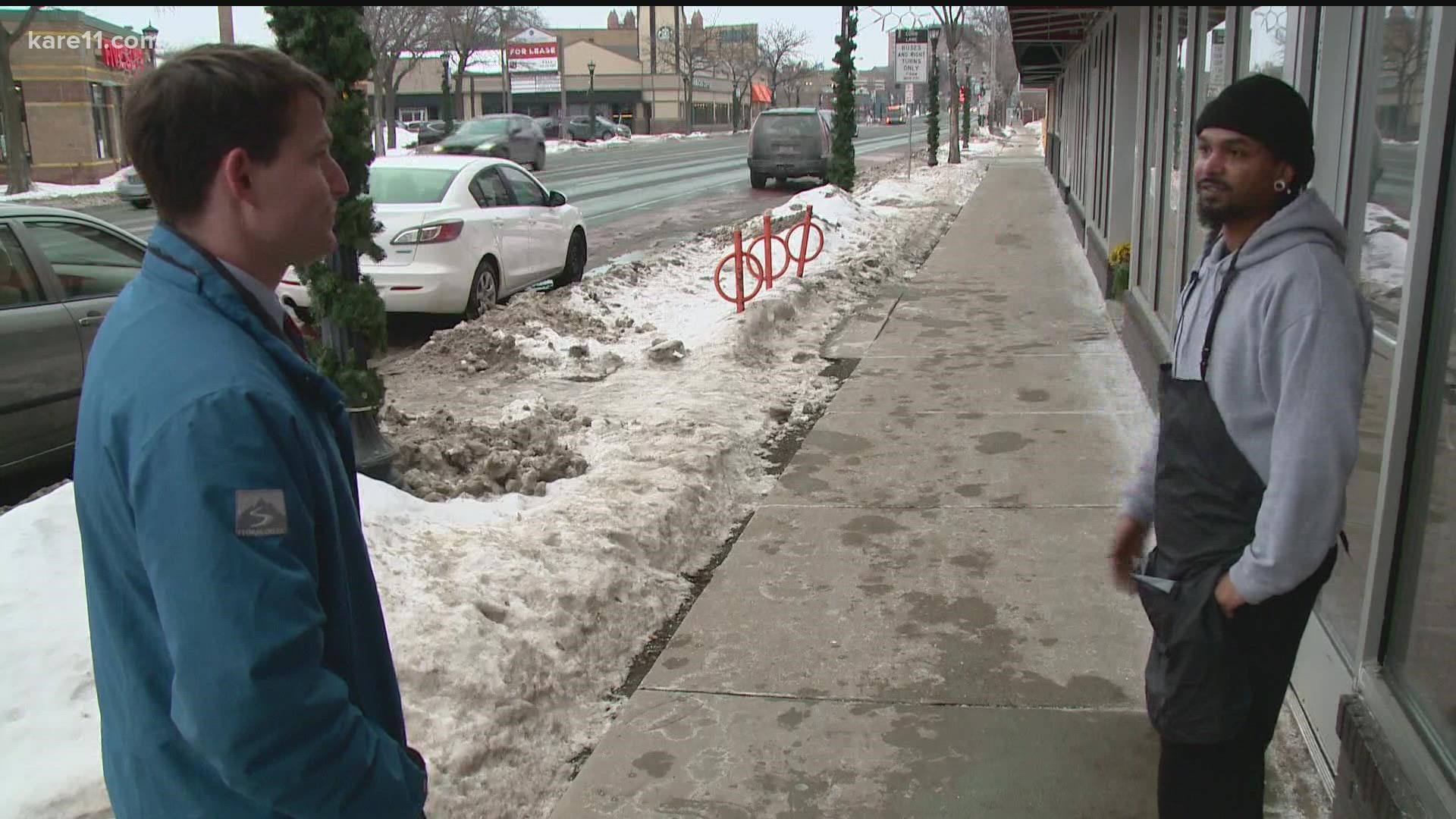MINNEAPOLIS — For the first time in six decades, a busy stretch of Hennepin Avenue through south Minneapolis may receive a major overhaul.
Citing a higher-than-average crash rate compared to the rest of the city, the Public Works Department wants to redesign a portion of Hennepin from Douglas Avenue to Lake Street, a 1.3-mile corridor serving 15,000 residents in Lowry Hill, Lowry Hill East, and East Isles.
It’s all part of a $30 million project that would add dedicated bikeways and bus lanes to Hennepin Avenue, widen sidewalks, and drop vehicle traffic to one lane in each direction with some left-hand turn lanes at intersections.
The proposal, which Public Works plans to present to a city council committee during the first half of 2022, would also drastically reduce on-street parking options along Hennepin. According to a presentation given by the city last month, the number of available parking spots would fall from 311 to just 20.
For that reason, the Hennepin Avenue redesign plan has become a lightning rod of debate in south Minneapolis, pitting some angry small businesses against neighborhood advocates who say the plan will make the area safer and easier to access with bicycles and public transportation.
Katie Jones, a member of the neighborhood group “Hennepin for People,” said the current structure of Hennepin Avenue is too dangerous and chaotic.
“You’re literally just taking your life into your hands when biking on this road,” Jones said. “I think if we want to have thriving businesses on this corridor, we need to be able to bring more people down here. A singular vehicle could only have four people; a bus holds 40.”
However, in a letter shared with KARE 11 by the Uptown Association, more than 100 businesses urged the city to reconsider the plan, arguing that “the elimination of parking along Hennepin from over 300 stalls down to 20 puts an undue hardship on businesses that are trying to recover from civil unrest, high criminal activity, and the pandemic.” Those businesses added in the letter: “Without significant modification, this project will adversely affect the entire Uptown community, threaten the viability of small and independent Uptown businesses and their employees and visitors, burden residential taxpayers, and provide yet another barrier to having an Uptown that can function as a vibrant commercial area.”
Tyler Kazlow, whose family owns One 21 Barbers near Hennepin and 24th, said the proposal will strip his customers of vital parking spots.
“I just really believe Minneapolis doesn’t care about small businesses,” Kazlow said. “I’m just not for it. Especially with the bike lanes. It’s kind of taking up convenience, for a lot of people.”
However, the city’s proposal does call for specific loading zones and possibly metered parking on side streets, to expand options for customers that make quick stops or deliveries to businesses on Hennepin.
Allan Klugman, a traffic engineer with the Public Works Department, also noted in an interview that the design plan isn’t final yet.
“We’ve offered to be involved, and work collaboratively, with all the businesses. We do feel there are solutions in the corridor,” Klugman said. “There’s a lot of design yet to be done. We do intend to work with the business community throughout the design phase.”
After the Public Works Department submits the plan to the Public Works and Infrastructure Committee in the coming weeks, the full city council will need to approve it. Construction would not begin until at least 2024, according to the city.
Aisha Chughtai, the city councilmember representing Ward 10, said in a statement that “I continue to receive questions, comments, and concerns regarding the project from Ward 10 residents.”
“My priority is to engage with the inquiries I receive, communicate with the relevant City staff, ensure we are in line with our City’s adopted policies on this issue, and ensure we move forward with a layout for this street (which will last 50-60 years, as the last layout has) that is equitable for all who utilize the corridor – the 15,000 residents who live alongside it, the business owners and workers who make it run, and the patrons who have and will invest in it,” Chughtai said. “An equitable layout is one that works for transit users, pedestrians, and drivers of all ages and abilities, especially those who our City has struggled to serve in the past.”
Watch more local news:
Watch the latest local news from the Twin Cities in our YouTube playlist:

